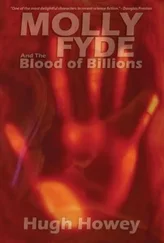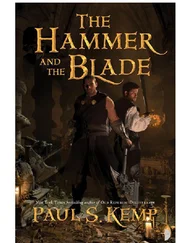The architectural and social development of the suburbs from organic communities to quasi-utopias to atopias, or even to non-places, is mirrored in the structure of this book, which corresponds to the timeline of the suburbanisation of the United States from the 1920s until the present. In this context, it needs pointing out that historically speaking, Harris and Larkham (93-96) differentiate between three types of suburbs – residential, industrial and unincorporated –, but the primary focus of this book lies on the residential type. Each chapter begins with an outline of the decisive suburban developments of the period in question, with a particular focus on architecture, urban planning and design. After this general overview, two literary or cinematic key works are discussed in order to illustrate and elaborate on the architectural development of suburbia on a fictional level in the corresponding time frame.
Chapter one focuses on the 1920s, a decade in which the United States experienced a first suburban boom. The “Roaring Twenties” was a time when most of the country’s suburban areas still retained a sense of exclusivity and were predominantly affluent – which was mainly due to the cost of travel between the city and its suburbs –, and this affluence manifested itself in architecture, in interior design, as well as in consumer products, among other domains. The literary examples chosen for this period are Sinclair Lewis’ Babbitt and F. Scott Fitzgerald’s The Great Gatsby , two works which not only portray the mentioned suburban affluence, but which are also set in the two metropolitan areas that were the first to be impacted by suburbanisation, that is, the Midwest around Chicago and Detroit, and Long Island, New York.
With the 1930s and early 1940s being dominated by the Great Depression and World War II, chapter two resumes the story of the suburbanisation of the United States in the postwar period, a time when new housing was needed quickly and cost-effectively. Mass production of development tracts on the outskirts of the country’s urban centres was the result, and it proved to shape the suburban environment decisively. At the same time, however, people were dreaming of Arcadian landscapes after the horrors of the war, and they were hoping to fulfil their dreams in the suburbs. Eric Hodgins’ Mr. Blandings Builds His Dream House is an example of people’s misguided hopes regarding life outside the city, as well as of the imminent threat that fast-paced building activities posed to rural areas after the war. As far as architectural mass production is concerned, John Keats’ The Crack in the Picture Window sheds light on the effects of this phenomenon on the average suburbanite, as well as on the largely irrevocable mistakes that have been made in the planning of the suburban landscape in the United States.
Chapter three loosely covers the aftermath of suburban mass production in the remainder of the twentieth century, when the outskirts still expanded rampantly, and when many people had lived in this environment long enough to be somewhat disillusioned by the experience. By the 1960s, the suburbs had already gained a negative reputation and were heavily criticised for a variety of reasons, most of which have persisted until this day. The 1960s were also the time when some of the most iconic narratives of suburbia were written, and when two of the most notable authors of suburban fiction, John Updike and John Cheever, emerged. However, in order to give this chapter a new dimension, the two selected novels, Anne Rivers Siddons’ The House Next Door and T. Coraghessan Boyle’s The Tortilla Curtain , were published in the late 1970s and mid-1990s, respectively, and are not exclusively concerned with the ubiquitous discourse on triteness and conformity. The House Next Door was chosen as a representative of the Suburban Gothic, and the novel simultaneously portrays the changing and diversifying architectural landscape of the suburbs by means of the efforts of an architect to build a contemporary house among the omnipresent Dutch Colonials. The Tortilla Curtain , dealing with an important development related to suburban planning, was selected due to its focus on the gated community and the attempt to defend the suburban dream by means of the built environment.
With this phenomenon being the most defining characteristic of contemporary suburbia, chapter four deals with suburban sprawl. Since the 1920s, suburbia has never ceased to expand, and an overwhelming more than fifty per cent of Americans now live in this environment. In other words, the suburban population is presently larger than that of the urban and the rural combined. Many inner-city neighbourhoods have become deserted and dilapidated, and suburban sprawl has come to dominate the landscape. As sprawl has a highly elusive and visual dimension, when it comes to fiction, the medium of film undoubtedly provides a better representation of this phenomenon than the written word, which is why two films by independent director Todd Solondz are discussed. Within the context of his most celebrated film Happiness , the analysis mainly focuses on the architectural eclecticism that sprawl has brought to the American landscape, whereas within the context of his more recent release Dark Horse , the suburban infrastructure and the car-based lifestyle that is engendered through suburban expansion are scrutinised.
The concluding chapter offers a summary not only of the works discussed, but also of the contemporary criticism surrounding the American suburb as both a built and social space, and it outlines predictions about the future development of this environment. Furthermore, the question of the relationship between material buildings and literary architecture is addressed again, since this question underlies the discussion of texts in this book, but in the past was often perceived as an irreconcilable issue in literary criticism. Furthermore, attention is drawn to the differences between the physical suburb and its literary representation, as even though writers and directors are bound to be inspired by their built environment, they are equally bound to be inspired by the myths surrounding American suburbia, and these myths have persisted in fiction more than in reality.
1 Suburbia in the Roaring Twenties: Anti-Urban Biases and the Shaping of Suburban Identities
The 1920s – the Roaring Twenties or the Jazz Age, as they are often referred to – are a crucial period in the history of American suburbia. It was in this decade that the suburbs experienced a first boom, with roughly 900,000 homes built each year between 1920 and 1927, and the decade ending with one in six Americans living in this rising geographical, social and architectural environment (Kushner 7).1 In fact, at the beginning of the decade, the US government set its sights on housing every family in their own detached dwelling, with the idea being strongly popularised in the media. However, suburbia was still a marginal phenomenon, especially in terms of cultural relevance, and the demarcations between city and country were much clearer than in the second suburban boom taking place in the postwar period. Stevenson (4) even goes as far as to claim that in the 1920s, “[t]here were, practically speaking, no suburbs.” This statement is misleading, however. While the American suburbs of the 1920s might not have had the stereotypical appearance of those of the 1950s and 1960s, the process of metropolitanisation was in full swing, and the outskirts were growing at a faster rate than their inner cities (Barrow 200). According to architectural historian Gwendolyn Wright (195), they were even growing twice as rapidly, and mass production of residential developments, although commonly associated with the postwar period, was also practised in the 1920s, when “[e]ntire blocks were laid out with quaint Mission bungalows or enticing English cottages.” As Harris and Larkham (1) emphasise, the perception that the development of the suburbs is, in essence, a postwar phenomenon, and that the touchstone decade is the 1950s, is based on half-truths and myths.
Читать дальше











